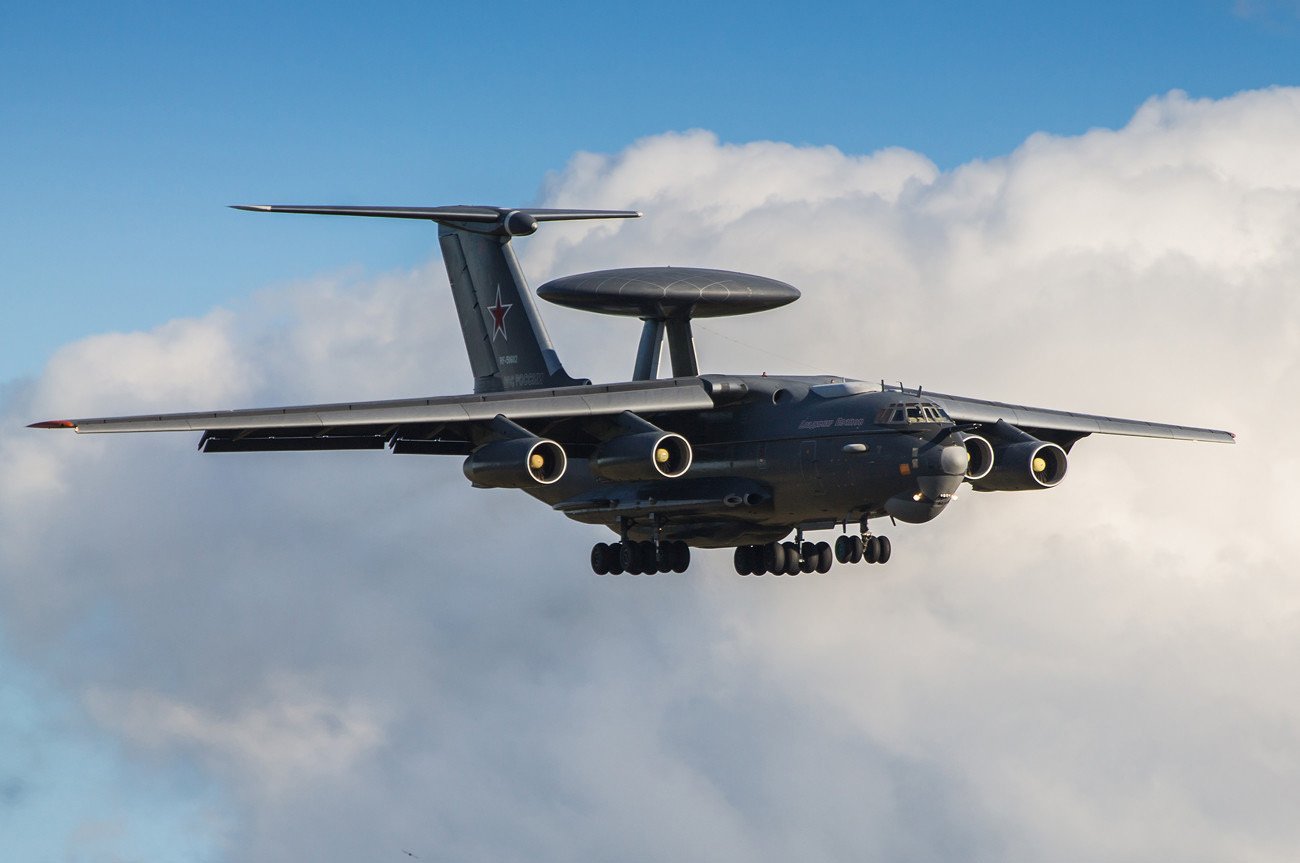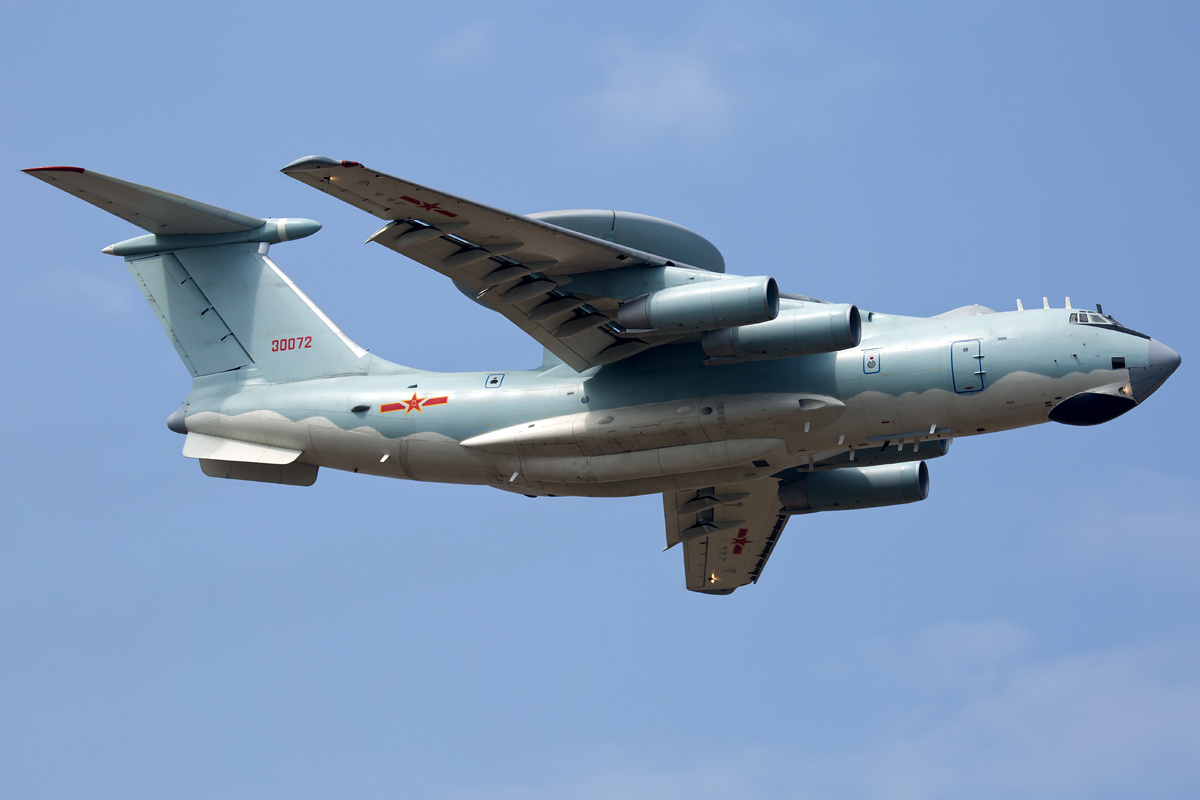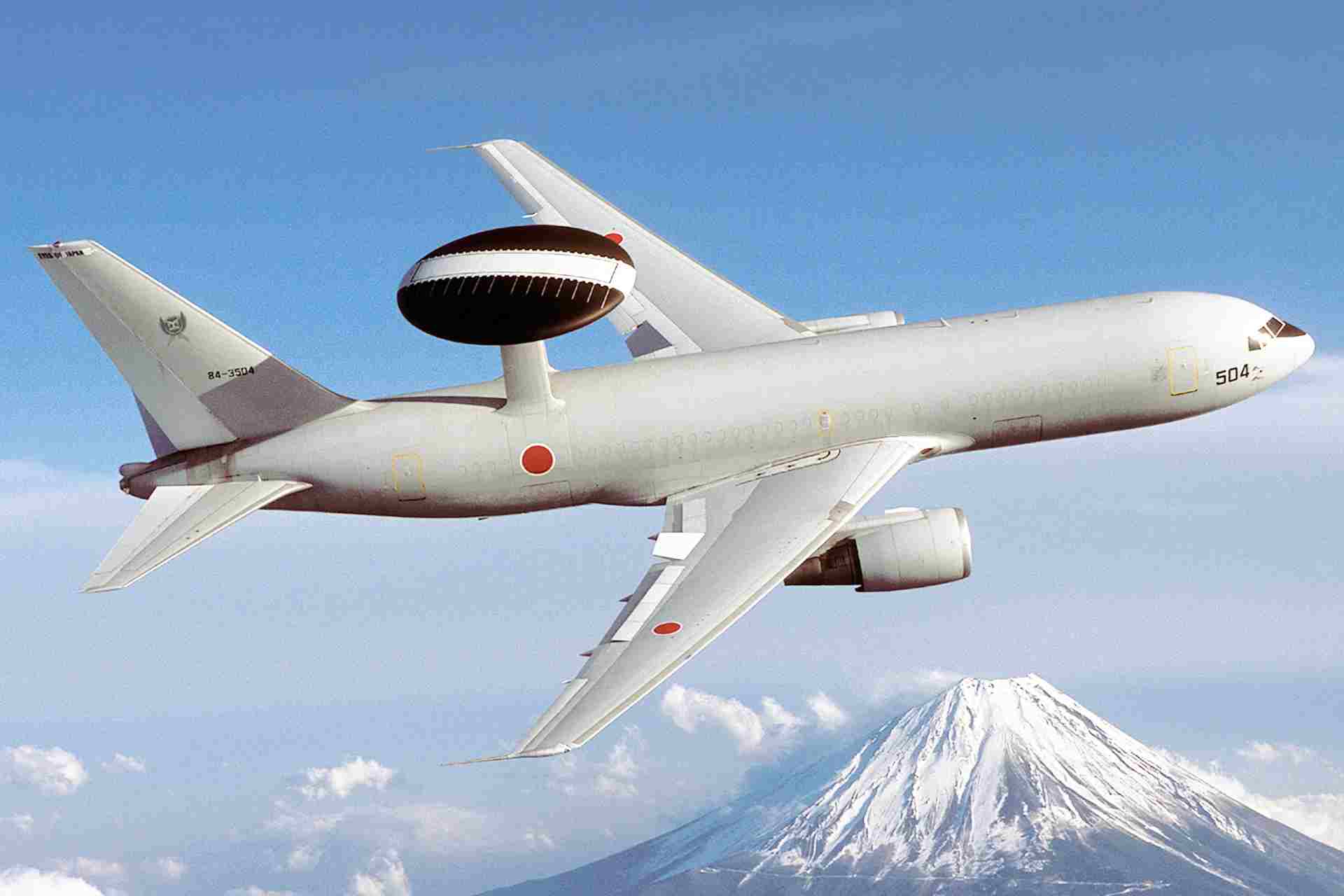OPED By Air Marshal Anil Chopra (Retired)
Airborne Early Warning and Control (AEW&C), the “radar in the sky” command and control platform, has become an integral force multiplier of all major air forces. The first air combat when both sides actively used AEW&C was during Pakistan Air Force’s (PAF) retaliation to the Indian Air Force’s (IAF) Balakot strike on February 27, 2019.
PAF engagement was directed from a Saab-2000 Erieye AEW&C and was supported by a Falcon 20F Electronic Warfare aircraft provided jamming. IAF had the A50 ‘Phalcon’ and DRDO ‘Netra’ AEW&C.
The NATO AEW&C has played a very significant role in supporting Ukraine in the conflict with Russia. Earlier, the Western AEW&C played a game-changing role in the Falklands, Iraq, Libya, and Afghanistan. The Israelis have extensively used the platform in their wars in the neighborhood.
Typically, the AEW&C could have a detection range between 4-600 kilometers. It has to fly closer to the tactical battle area at a reasonable altitude to look deeper into the opponent’s territory to support the air and surface battles.
But, the AEW&C, being a large platform, can be detected by adversary radars at long ranges. Most countries are designing surface and aerial missiles with ranges inching toward 400 kilometers.
While China’s claims are often shrouded in deception, the US security establishment does believe that China is pushing ahead with aerial missiles.
AEW&C Platforms and Capabilities
AEW&C aircraft act as a command post that provides situational awareness and directs all air activity in its sector. The radar is mounted on a large transport aircraft and housed in a dish casing or other aerodynamic shapes to reduce drag.
Some radars have a rotor dome that rotates six times a minute. Many have a static beam with an active antenna array unit, which gives 240° coverage using electronic beam-bending and aircraft maneuvers to cover the 3600 around.
The aircraft has to cater to additional electric power requirements. In the cabin are housed interception and strike directors and signal intelligence and electronic warfare managers.
The AEW&C can detect aircraft, ships, vehicles, missiles, and other incoming projectiles at long ranges. Typically, an AEW&C can support integrated command and control battle management by providing support for aerial surveillance, air strikes, air defense engagements, close air support, interdiction, maritime operations, airspace management, combat search and rescue (CSAR), disaster relief; and counter-piracy.
There are a few rotary wings AEW&C also, mainly for maritime tasks.
Main AEW&C Platforms
There are two platforms that are designated by name as Airborne Warning and Control System (AWACS). These are the American Boeing 707-based E-3 Sentry and the Japanese Boeing E-767.
The United States Navy operates the Northrop Grumman E-2 Hawkeye AEW&C aircraft on its super-carriers. Egypt, France, Israel, Japan, Singapore, and Taiwan also operate the Hawkeye.
The Russians have the Beriev A-50 based on the IL-76 airframe. A later variant, the Beriev A-100, which features an AESA array in the radar dome, is planned to be inducted in 2024.

China’s KJ-2000 is also based on the Beriev A-50 aircraft. KJ-600 is China’s carrier-based AEW&C for its larger third carrier, which will be operational by the end of 2024. China also has the smaller KJ-500 and KJ-200 AEW&C.
India has Beriev A-50 with the Israeli ‘Phalcon’ radar. It also has the DRDO ‘Netra’ atop the Embraer-145. Australia, South Korea, and Turkey have Boeing 737-based AEW&C.
Brazil, Greece, and Mexico use Embraer R-99 with Ericsson Erieye radar. Sweden and Pakistan use Saab platforms with Erieye radar. Israel has its own radar on Boeing 707, and also on Gulfstream G550. P600 AEW&C ELW-2096 (Airborne Early Warning) is Israel’s next-generation aircraft based on the Embraer Praetor 600 business jet.

AWACS Takeaways In The Ukraine Conflict
NATO has its own fleet of 14 AWACS, including Boeing E-3As. They can detect low-flying targets within 400 kilometers and higher-flying targets within 520 kilometers. One AWACS can cover an area of the size of Poland, and three can cover all of central Europe.
They can do a maximum of around 8-hour missions without refueling. The full surveillance picture and electronic intelligence are then transferred to a Command Control bunker in Kyiv, and from there, the operational staff supports striking Russian targets.
Similarly, the AWACS supports early warning of Russian attacks and also air defense targeting of incoming aircraft. Russians have been conscious of NATO support. They, too, have been flying their A50 AEW&C to support their own operations.
UK claimed that in 2022, a Russian fighter jet released a missile near a British Air Force RC-135 Rivet Joint surveillance aircraft that was reportedly flying in international airspace over the Black Sea.
NATO had scrambled fighter jets more than 500 times in 2022 and 300 times in 2023 to intercept Russian aircraft coming close to NATO airspace.
Ukraine has claimed to have shot down a Russian A-50 and the Il-22 airborne command post. It could have used the S-200 or one of the two MIM-104 Patriot batteries that Ukraine operates.
Some have reported that the Kremlin claimed that both the downed A-50 and damaged Il-22 were mistakenly attacked by friendly fire. Independent analysts believed that Russians had not done enough SEAD.
Losing an AEW&C by moving it closer to an active combat area was also considered foolhardy, more so considering that the Russians have only eight A50s. Some compare it to the sinking of the Russian Cruiser “Moskva.”
Aerial Missiles
Air-to-air missiles (AAM) have come a long way from being powered by rocket motors to ramjet engines, as used on the Meteor, which gives them long-range and higher average speed across their engagement envelope.
Once used within the visual bubble (WVRAAM) for “dogfights,” the missiles today are well beyond visual range (BVRAAM). They can operate in highly electronic countermeasures environments in contested domains.
The long-range ones depend mostly on a combination of inertial, GPS, and radar guidance and have significant autonomy after launch. There are modern missiles that can take on both aerial and ground targets.
Very long-range missiles allow them to threaten larger targets such as AEW&C and Flight Refueling Aircraft (FRA) and keep them farther away from the battle area.
There are missiles designed to home on to AEW&C radiations or even “home on jammer.” Some countries are developing hypersonic air-to-air missiles like Russian Vympel R-37 and American AIM-260 JATM and AIM-160 CUDA/SACM using scramjet engines. A key feature of a good missile is the high “no escape zone.”
Among the current top-end BVR missiles (ranges in brackets) are the Russian K-100 (200 km), R-33 (160 km), and R-37M (200 km). The R-37M can be carried on the MiG-31 and Su-35 fighters.
India’s Astra variants (Astra-2 160 km), USA’s AIM-120 AMRAAM (160 km), AIM-260 JATM (200+ km), Novator KS-172 a variant of K-100 (JV-Russia and India), MBDA Meteor (200 km), and the Chinese PL-15 (200+ km) and PL-21 (300+ km). Turkey has Gökdoğan (65-100 km) and is developing ramjet based Gökhan.
The US is also developing the Raytheon Long-Range Engagement Weapon (LREW) and working on adapting the ship-based anti-aircraft missile RIM-174 Standard ERAM SM-6 (240 km)) for launch from an aircraft.
Russia sees the MiG-31 armed with R-37M as a “AWACS killer”. Russia could modify the hypersonic Kinzhal to be a long-range air-to-air missile like the R37M.

Ground Based Long Range AD Missiles
The AEW&C will also be threatened by long-range ground-based AD missiles. Among the modern surface-to-air missiles (SAM) are American RIM-174 Standard ERAM (250 km), Terminal High Altitude Area Defense (THAAD) (200 km), and MIM-104 Patriot (160 km).
Russia has S-500 Prometheus (600 km), S-400 Triumf (400 km), and S-300V4 AWACS Killer (400 km). China has HQ-9B (250 Km) and HQ-15 Chinese variant of the Russian S-300 PMU-1 (300+ km).
Israel’s surface AD weapons are Iron Dome (70 km), David’s Sling (250 km), and SPYDER (50 km). India’s LR-SAM based on Barak-8ER (150 km), and planned XRSAM (400 km). Many ships have long-range SAMs. There are also anti-ballistic missile systems with even longer ranges.
Why India Needs More AEW&C?
The PLA Air Force (PLAAF) has four KJ-2000 and KJ-200, and 20 KJ-500. Numbers may look small for the country’s size and commitments, but they will soon convert a Y-20 to AEW&C.
PLAAF also has eight dedicated ISR aircraft and 26 Electronic Warfare aircraft. Similarly, PAF outnumbers IAF slightly with its three Saab 2000 (Erieye) and four Chinese ZDK-03 (Shaanxi Y-8) AEW&C variants. They also have three modified Dassault Falcon 20 aircraft, which play a primary role in electronic warfare.
India is a continental-sized country with multi-directional threats on land and sea borders. With just three each of large (A-50 Phalcon) and smaller (DRDO Netra), such a huge area cannot be covered. The plans to make six larger (A-319 based) and six additional ‘Netra’ is a good decision. The program needs to be accelerated.
Dynamics for AEW&C Operations and Defence
The AEW&C typically operate at subsonic speeds and are large in size. The vulnerability of these high-value airborne assets is already of great concern for air forces operating such types due to the proliferation of long-range air defense systems, which can hold them at high risk of attack.
A determined fighter aircraft can get it, and an autonomous unmanned can even ram it. The aerial and ground-based missiles’ effective ranges are close to the detection range of AEW&C. Many missiles have ECCM features and immunity to jamming. If a platform can be kept 4-600 kilometers from the scene of action, its utilization reduces considerably.
Maintaining the old Boeing 707 and also the rotor-dome has its complexities. The US Air Force, for example, is advancing plans to phase out its aged Boeing 707-based E-3 AWACS fleet, replacing the type with the Boeing 737NG-derived E-7A Wedgetail.
NATO, too, will replace its AWACS inventory with the E-7A in the early next decade. The UK may do it even earlier. The Russians, and because of them, China and India, are facing maintenance issues on A-50-based AWACS, and new platforms are not available.
Any transmitting radar platform such as AEW&C gives out significant electronic signals, and the same can be picked up from earth or space-based assets. Tracking the AEW&C, which has a huge radar signature, is not difficult.
The AEW&C is a high-value asset that must be defended. Having air defense escort aircraft covering the flanks of the AEW&C was once a tactic. With very long-range AAMs, that doesn’t help much anymore.
Having missile warning systems onboard and anti-missile defenses such as jammers are being resorted to. But a missile may still get through. Anti-missile missiles could be carried in the future as they get developed. So, it can be laser-based anti-missile directed energy weapons. The safest defense currently remains to keep the platform at safer distances from adversary AD weapons.
A group of aircraft like the MiG 31 with powerful radars can act as cooperative AEW&C. Russia will combine its Fifth Generation fighters Su-57 and Su-75 with UAV S-70 “Okhotnik” Hunter.
With stealth bombers already in place with the US and Russia and under advanced development with China, one option is to develop more stealthy AEW&C. The radar would then have to be embedded in the wings and fuselage. This would allow them to come closer to the tactical area. The concept of “Heavy Stealth” is already work-in-progress.
One day, the AEW&C sensors may shift to being space-based. Put on a constellation of small satellites, they may cover a larger area and also bring in safety and redundancy.
While work is on to increase survivability, it emerges that the current class of AEW&C aircraft will be used more on peace-time surveillance or at farther distances from combat areas.
They will be useful in less-contested environments. AWACS planes will not disappear altogether. Not yet.
- Air Marshal Anil Chopra (Retired) is an Indian Air Force veteran fighter test pilot and is currently the Director-General of the Center for Air Power Studies in New Delhi. He has been decorated with gallantry and distinguished service medals while serving in the IAF for 40 years. VIEWS PERSONAL
- He tweets @ Chopsyturvey
- Follow EurAsian Times on Google News




